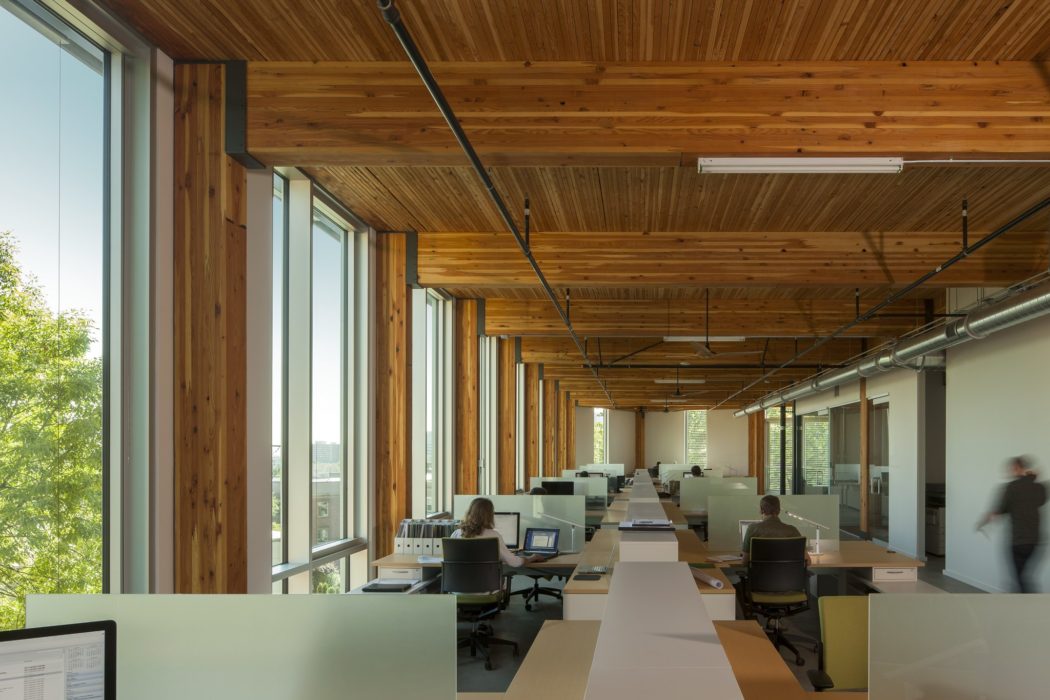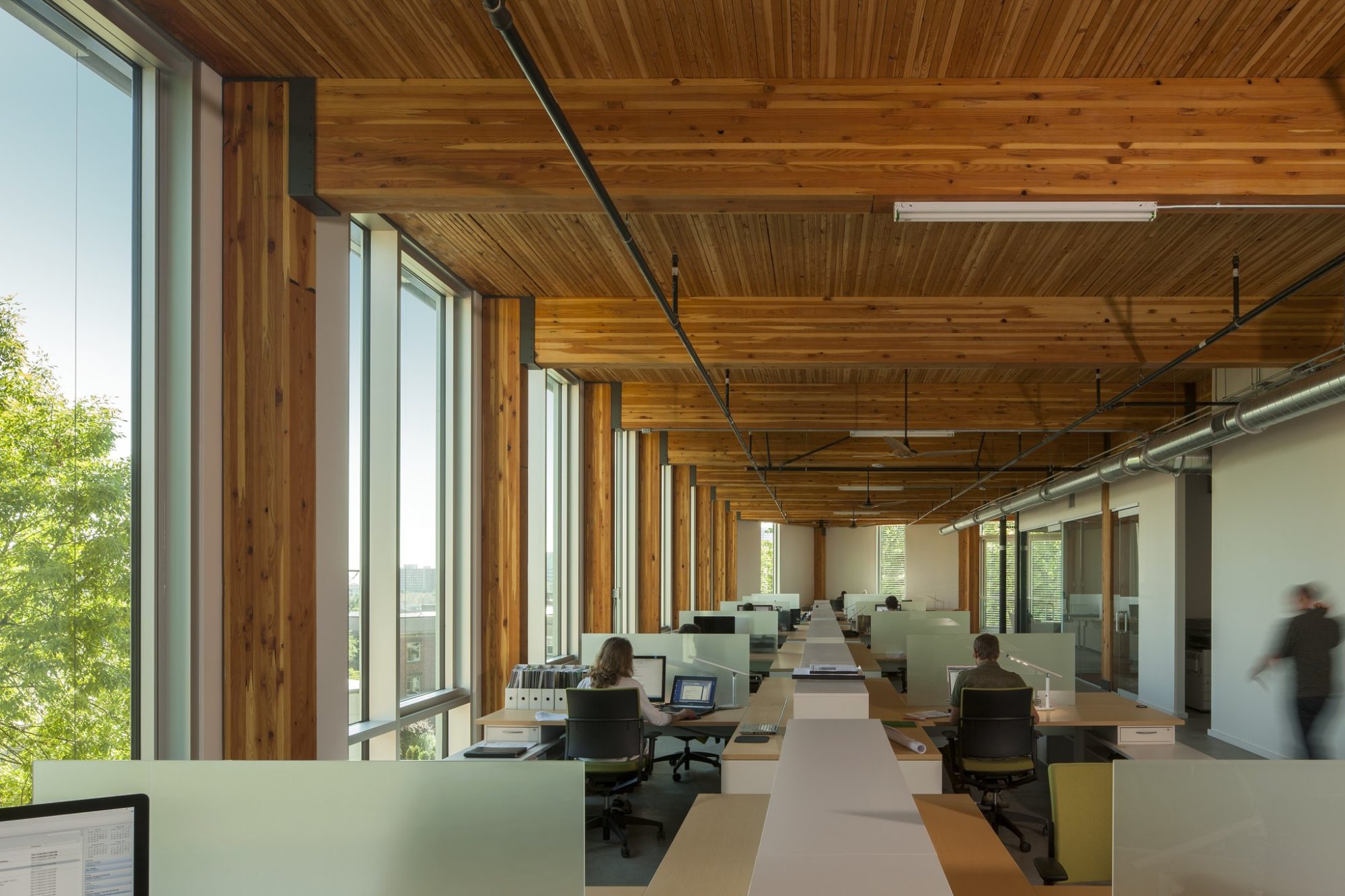
Almost 20 years ago, Edward Mazria discovered he was part of the climate problem. Discussions of global warming at that time focused mostly on automobiles and power plants, but Mazria, a Santa Fe-based architect, wanted to know how the buildings he designed were affecting climate change.
He and a team of staffers started researching. They wanted to factor in all of a building’s materials and operations, from the steel and concrete inside of it to the electricity it used each year. In the end, Mazria’s team discovered that our homes, offices, schools — the built environment — accounted for 48 percent of U.S. energy consumption.
“That was pretty startling,” Mazria told me recently. Since publishing his findings in 2003, Mazria has become a leading climate voice among architects. In 2006 he founded Architecture 2030, a think tank that researches and promotes methods to zero out the built environment’s carbon footprint by 2040.
His message is clear: To keep warming to 1.5 degrees Celsius and mitigate the worst effects of climate change, our built environment has to dramatically change. Fortunately, those changes in our towns and cities could yield a whole host of benefits, from more affordable housing to a stronger architectural identity in the various climates of the West. And doing all this would mean scores of new careers in the construction and design industries. “The way to create jobs,” Mazria said, “is to reduce emissions.”
This story first appeared in the Bitterroot Newsletter. Sign up below to receive Jake’s latest reporting right in your inbox.
Architecture 2030’s plan centers on three pillars. First, new buildings can’t emit carbon. That means buildings need to be electrified, Mazria said — once the building’s utility switches to clean energy, the building itself does, too. In addition, every building should have on-site power generation, probably with solar panels. If that doesn’t meet the structure’s energy needs, the property owner should source external renewable power.
Pillar number two: retrofit all existing buildings. All the drafty windows, inefficient boilers, and energy-guzzling appliances must be replaced in our current homes and offices so their carbon footprint can be minimized. And, like new builds, these structures must be electrified — no natural gas.
Finally, the stuff we build out of needs to be carbon-free, too. A building can’t be clean if its components are dirty, and the production of just steel and concrete pumps out 14 percent of the globe’s annual carbon dioxide emissions.
It’s a big lift, sure — but we’re already making progress. Thanks primarily to efficiency measures and the growth of renewable energy, emissions from buildings’ energy use fell 21 percent from 2005 to 2019, even though we built 47 billion square feet of new floor space in that time and the nation’s gross domestic product grew 26 percent. “This whole notion that addressing emissions is going to kill the economy is nonsense,” Mazria said. Economic growth and emissions, which historically grew in lockstep, have decoupled over the last 15 years. “And we saved energy consumers billions of dollars … that went back into the economy.”
We’re getting glimpses of what our climate-friendly cities will look like. At the cutting edge are “living buildings” like Seattle’s Bullitt Center and the under-construction PAE Living Building in Portland. These uber-green structures generate more electricity than they use, promote a pedestrian-friendly lifestyle, capture rainwater, and utilize passive heating and cooling systems. But the vast majority of buildings don’t meet these standards, and planners and architects around the West recognize they’re up against a climate clock.
“Las Vegas is warming up faster than any other [U.S.] city, so we have to do more,” Steffen Lehmann, director of the University of Nevada, Las Vegas’s architecture school, told Las Vegas Weekly. “We have to do better in how to mitigate and adapt to climate change and be more resilient.”
That resiliency could yield more regional flair in the West’s architecture. A Seattle apartment complex might have a southern exposure to maximize sunlight and be constructed with locally-produced mass timber to cut down on steel and concrete. In Phoenix, on the other hand, a similar building could be clad with an adobe facade and feature an evaporative cooling tower to mitigate the region’s oppressive heat. Both might have a water catchment system — but in Seattle, the purpose would be to manage the Northwest’s increasingly volatile winter precipitation, while the Phoenix cistern would store water for household use. The landscaping would reflect the ecosystem — palo verde trees in the Phoenix yard, firs and ferns in Seattle. Solar panels would adorn both properties, but the Seattle building would probably have to contract with an offsite community solar installation to cover all its electricity needs. In Phoenix, meanwhile, those panels would meet nearly all of the property’s electrical needs.
“In the Southwest, with consistent sunshine, you can essentially become your own utility and go off-grid,” Mazria said.
But when it comes to climate, an individual building can only do so much. Reducing the climate impacts of our built environment will require change at the policy level, too — foremost being the elimination of single-family zoning, a major reason Western cities are so sprawling and car-dependent.
A climate-savvy city requires density. Placing, say, five homes on a parcel instead of one is inherently more efficient. Those five families share resources — sidewalks, streets, utility connections, etc. — they otherwise wouldn’t, and they are likely living in smaller spaces that are more efficient to heat, cool, and light. Smaller units are also less expensive, and dense development can reduce folks’ dependence on automobiles.
Instead of zoning neighborhoods only for single-family homes, then, many urban planners and architects say policies that allow duplexes, triplexes, and mother-in-law units throughout cities should be implemented, as Oregon did in 2019.
“We still are very much wedded to our single-family homes,” Jennifer Steffel Johnson, a professor of urban planning at the University of Colorado Denver, said at a design conference last year. “But [less restrictive zoning] is one piece of the solution.”
Zoning is up to states and municipalities, but a federal infusion of cash could help with the projects Mazria is calling for. President-elect Joe Biden’s climate change plan includes pledges to retrofit 4 million buildings, weatherize 2 million homes, and build 1.5 million high-efficiency homes. Funding for such projects would require congressional approval, but they would spur a good deal of economic activity.
A climate-friendly retrofit, for instance, means work for folks who install solar panels, landscapers who specialize in drought-tolerant plants, contractors to replace windows and bolster insulation, and plumbers to remove gas pipes and install low-flow water fixtures. Architects and engineers would work behind the scenes, and government inspectors make sure the work is done well.
According to one estimate commissioned by the Sierra Club, a sustained federal investment of $37.5 billion in building retrofits would create 217,000 direct jobs and another 150,000 indirect ones. And there’s demand for this work: nearly 39 million low-income U.S. households are eligible for weatherization assistance from the federal government, yet fewer than 200,000 homes are renovated in most years.
Couple Biden’s proposed spending with zoning and incentives at the local level that prioritize infill of city lots, repurposing of struggling assets like shopping malls, and renovations of homes in low-income neighborhoods, and the flood of work only grows.
And all of this would come at a time of increasing climate and income vulnerability in the U.S. Sure, a California home with solar panels and battery systems use less energy, Mazria said, but it also is better prepared for the state’s rolling blackouts during fire season. And requiring energy-efficiency measures is just as important in affordable-housing developments as it is in a new high-rise building, especially since low-income households spend a larger portion of their incomes on heating and cooling their homes.
Climate change is an undeniable threat. But remaking our cities to prepare for it could be an unparalleled economic opportunity.
I rely on readers like you to spread the word about Bitterroot. Please share it with a friend.
Worth a Read
Top stories from around the West
The auto industry’s future is electric, and California’s Imperial Valley is hoping to be the lithium and battery hotbed that powers it. David Baker writes in Bloomberg that numerous companies are vying to extract and process the enormous amount of lithium beneath the Salton Sea.
•••
Western ranches were already being consolidated in the hands of the rich. The pandemic is only accelerating that trend, Brett French writes in The Billings Gazette.
•••
The latest on COVID-19: Los Angeles could face a stay-at-home order. New Mexico is closing groceries where enough employees test positive — much to the chagrin of the people living in food deserts. By stretching staff resources so thin, Utah doctors say they’re essentially rationing care. Nevada Governor Steve Sisolak is ramping up restrictions. And in Colorado, health care workers are coping with desperation: “This is absolutely insane that we are going through this for the third time, and we are burned out.”
•••
This summer, Salt Lake City artists started painting murals of people killed by police. Tony Semerad writes in The Salt Lake Tribune that those paintings could alter the city’s plans for its Granary District. The story, in which art pushes back against police violence and gentrification in such a tangible way, really shook me.
•••
A dialect of Spanish, unique to Colorado’s San Luis Valley, is disappearing. The Denver Post’s Sam Tabachnik has the story of Dennis Lopez, a rancher and former professor who’s trying to save it.
Appreciate independent Western reporting?
Your Land
An ode to the public lands we share

I’m off until next week. Have a great Thanksgiving, everybody. — Jake
Share with a friend | Watch a cat video | View previous newsletters

